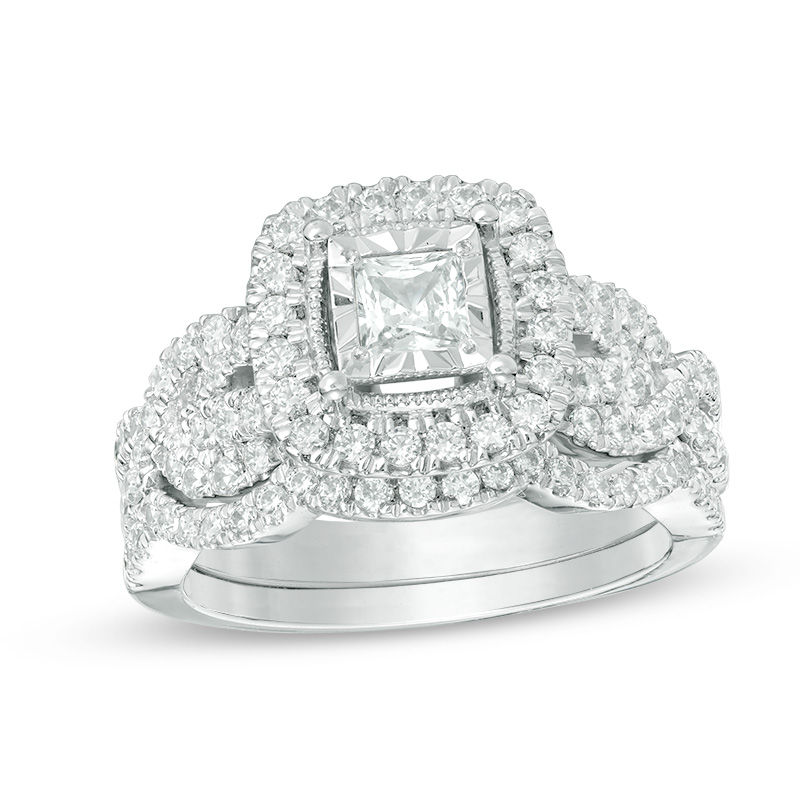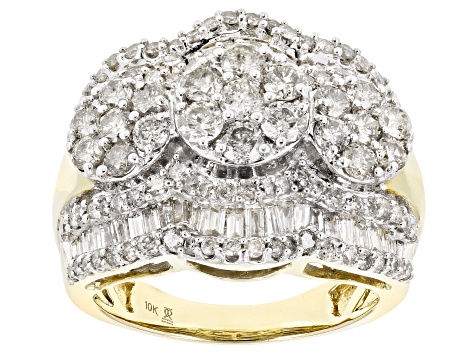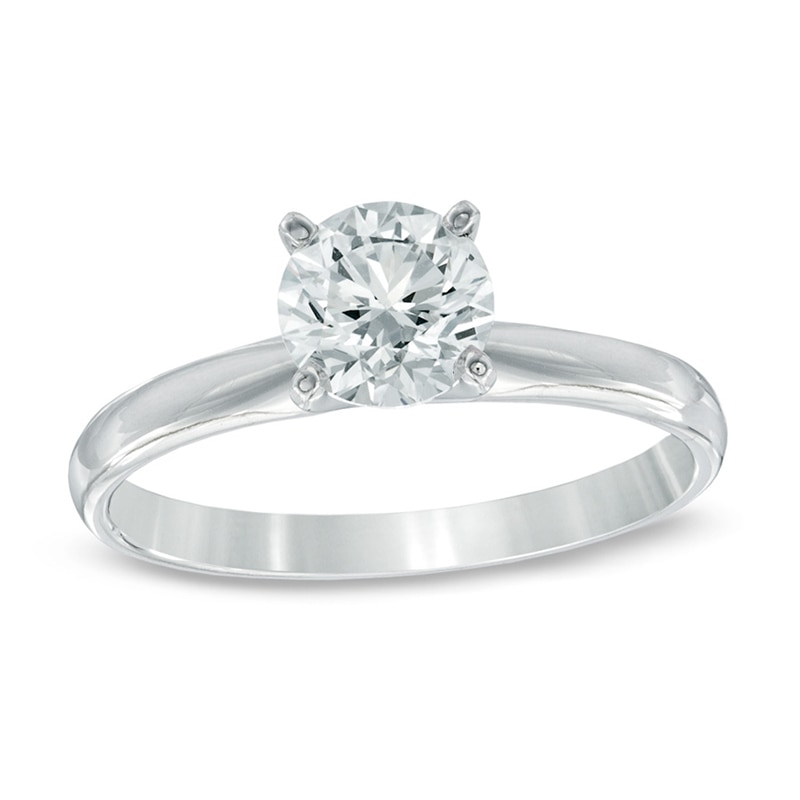1-1/2 CT. T.W. Princess-Cut Diamond Frame Vintage-Style Twist Bridal Set in 14K White Gold
Appeal to her taste with this enchanting vintage-inspired diamond bridal set.
Appeal to her taste with this enchanting vintage-inspired diamond bridal set. Crafted in 14K white gold, the sparkling engagement ring features a 1/2 ct. princess-cut diamond Center stone wrapped in a diamond-adorned cushion-shaped frame. The diamond-lined twist split shank lends heirloom appeal to the design. On your special day, a scalloped diamond wedding band adds dimension to complete the ensemble. Captivating with 1-1/2 cts. t.w. of diamonds and a brilliant buffed luster, this bridal set is certain to become a treasured keepsake.
Item #: 20314438
Additional information
| STONE(S) | Total Weight (CT. T.W.) 1-1/2 |
|---|---|
| METAL(S) | Metal Type Gold |
| RING DESIGN | Ring Style Bridal Set |






by Lou
I gave my 50 year old wedding ring to my daughter so We decided to get me a 50th anniversary ring So pretty on the hand love the total look plus bonus band included It will blow your mind… great pic for the price..
by Lynn
I absolutely LOVE my set! I looked for my upgrade set for a while and always kept coming back to this one no matter what. Best decision.
by Amanda
I am happily engaged and I can’t believe this is my engagement ring! It’s beauty is so captivating. It’s uniquely designed and sparkles beautifully. ❤️ Pictures and videos does no justice! You have to see it in person to see it’s stunning beauty. I’ve received countless compliments and was told it’s the most beautiful ring they’ve laid eyes on!
by Nancy
Well my husband and I got engaged 2 years ago and we been married for a year and a half. I loved my engagement ring and wedding band boyfriend back then let me pick my engagement ring and wedding band. I adored my set but of course I’m a lady and I always want to upgrade when there’s a chance. I went to Zales to get my wedding set upsized and then while the lady was looking for prices after she took my measurements I decided to look around…. and then I saw this beauty I felt in love with the vintage design and it was stunning. I am very very happy with my upgrade. I work hard, I recently became a business owner and now that I can, I love treating myself.
by Paula
My boyfriend now fiancee let me pick out my own engagement ring and as soon as i saw this baby I fell inlove. Happy with my choice and i hope to upgrade soon.
by Kim
My wife and I upgraded our wedding rings today and we are so excited! I love my wife and our life and our rings. This ring is so elegant and vintage one of a kind I love my new ring!
by Tracey
This Ring Is Gorgeous, The diamonds just sparkle and I’m so glad we bought it.
by Kenny
This ring is breathtaking!! It looks so amazing!!